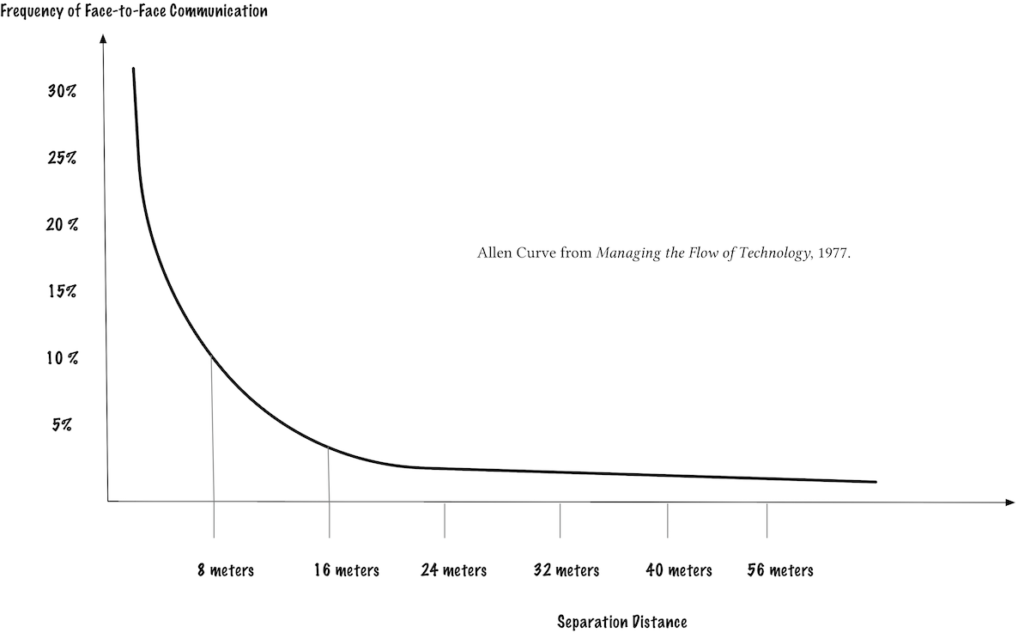Building Resilience – In Individuals and Organizations
Paul was a successful executive whom I met a few times, and over the course of several conversations, learned his life story. Abandoned by his drug-afflicted mother, he grew up in an orphanage until he was adopted by a couple when he was five. Paul was sexually abused, and at thirteen he left home and stayed with friends until he finished high school. Eventually he got a scholarship to go to college and found his passion in engineering. When I met him, he had become a senior executive, in one of the major automobile companies and was widely respected and admired as an empowering leader.
Take Penn State’s former running back Saquon Barkley, who has just started his NFL career. His father had a drug problem and was in and out of jail. While his mother uprooted him when he was four, along with his four siblings, so they could have a better life. Despite it all, Saquon has graduated and by all accounts is thoughtful, self-aware and very personable.
Many others in Paul’s and Saquon’s situation might not succeed under similar circumstances. Psychologists and management theorists attribute part of their overcoming all these obstacles to “resilience”. Yes, resilience seems to be a term often invoked these days. Even the U.S. military has recognized the importance of resilience and has built this concept into some of its training.
Field Manual 6-22 points to resilience as a critical leadership attribute: “Resilient leaders can recover quickly from setbacks, shock, injuries, adversity, and stress while maintaining their mission and organizational focus.” (Sewell, 2011).
There have been a number of research studies attempting to identify the characteristics of resilient people. Marston and Marston (2018) write that they have identified six characteristics of what they refer to as Type R:
Adaptability
A healthy relationship to control, continual learning, a sense of purpose, leveraging support, and active engagement.
Cacioppo et al. (2011) introduced an additional aspect of resilience with their concept of social resilience, which they define as “…the capacity to foster, engage in, and sustain positive relationships and to endure and recover from life stresses and social isolation.” (p. 44). Within communities and organizations, this collective resilience can be very powerful; workers who feel they are part of a larger whole can find strength when dealing with adverse working conditions or challenging situations.
Rodin (2014) suggests that resilience is “the capacity of any entity – an individual, a community, an organization, or a natural system – to prepare for disruptions, to recover from shocks and stresses, and to adapt and grow from a disruptive experience.” (p. 3) She uses the term “resilience dividend” as the capacity to be more adept at managing disruptions and in creating new opportunities.
Coutu’s (2002) research has concluded that resilient individuals (and organizations for that matter) have three characteristics: a grounded view and acceptance of reality, a deep belief that there is meaning in what they are doing and what they are going through, and an uncanny ability to learn, adapt and improvise.
Let’s take her first characteristic, a grounded view and acceptance of reality.
In my interpretation, this seems to be unrelated to optimism or pessimism. It simply means that you are unflinching in your view of what is going on (in his book Good to Great, Jim Collins explains this brilliantly). This is different from optimism, which is what others like Seligman (2011) argue is one of the key drivers of resilience. I tend to agree with the social critic Barbara Ehrenreich (2009), who took a cynical view of optimism and suggested that this was nothing more than wishful thinking. In my opinion, resilience reflects realism about the present, but optimism about the future.
A great example is Best Buy. A few years ago, many would have predicted, with the rise of e-commerce and monster competitors like Amazon, that Best Buy would eventually close shop, like Circuit City did a few years earlier. Best Buy was losing money and, in 2012, the CEO resigned in the wake of a scandal involving a romantic relationship with an employee. New CEO Herb Joly recognized the challenges; turning the company around was not going to be easy. One of his first decisions was to announce that he was going to match Amazon’s prices. Given Best Buy’s uncertain financial situation at that time, this was a bold move. Then he and his team tackled customer service by fixing delivery issues so that customers ordering on-line would receive their orders from the Best Buy location that could deliver their orders fastest rather than from centralized warehouses. They also offered free in-home consultations to customers who were considering making some purchases. Joly also reinstated employee discounts (a popular benefit for its workforce) and avoided mass layoffs. Today, Best Buy’s stock price continues to rise, and worker morale is up. In fact, Samsung, Apple and Microsoft have signed deals with Best Buy to feature their products on dedicated kiosks in branded areas within the store.
Making meaningful sense is what I would call Coutu’s second characteristic.
The classic example, as many know, is Victor Frankl’s experiences in a concentration camp, as described in his masterpiece, Man’s Search for Meaning. Bennis and Thomas (2002) describe these experiences as “crucibles” that leaders go through (especially with traumatic and negative experiences) where they somehow find meaning in these experiences and become transformed by them. In organizations, we see employees who get inspired by the purpose of their work, and what their organization stands for. Some of these organizations have created mission statements that are intended to be inspirational, although for many, the reality does not live up to the promise. Nonetheless, organizations view this as a powerful motivator. For example, despite the negative press about the pharmaceutical industry, I know many employees in these companies who view their work as truly meaningful and of benefit to mankind, and this drives their passion and motivation.
Coutu’s third characteristic is making do with what you have and improvising to address your problems.
A good example of this is Home Depot, which had been losing revenue and in fact under CEO Robert Nardelli had lost its market share to Lowe’s. When he left and Frank Blake took over, Blake realized that the company had lost sight of providing a great customer experience. It had expanded by purchasing Home Depot Supply, which was targeted to the commercial construction market. Home Depot Supply was increasing market share and was an important source of revenue for Home Depot (in 2006, its sales hit $12.1 billion); analysts argued that it was an important hedge against the soft housing market at that time.
But Blake decided that this business did not fit in with his plans to create a great customer experience. In fact, customer satisfaction ratings had been declining in recent years. He sold Home Depot Supply and began to improvise.
He empowered regional managers to make decisions on what merchandise to stock based on their knowledge of the local markets. He invested more in employees and stores and reconfigured the incentive program so that more employees would be eligible to participate. And he hired over 3000 skilled tradesmen (e.g., plumbers, electricians) to train store employees so they would be more knowledgeable in answering customers’ questions. Blake retired in 2014, but the company continues to do well (despite a recent data breach); in 2016, Home Depot had a 24% market share versus Lowe’s’ 17%, and it has been operating on a higher margin with significantly more stores.
Here are three take-aways from the research and from my coaching experience with executives.
First,
- Resilient individuals share the following characteristics: a belief that they have some control over their situation.
- Propensity to bounce back and respond positively and improvise.
- Ability to learn from adversity and failure.
Second,
Resilience can be learned and developed. To build individual resilience (and it is both an attitude and a skill) requires focusing on what I categorize as all three aspects of your “self”: your cognitive (your mind), behavioral (your body) and emotional (your heart) selves. The following are three practices that help to develop this skill:
- learn to apply perspective-taking regularly (to help your understanding of what it’s like to be in the other person’s shoes);
- Get out of your comfort zone (Eleanor Roosevelt once suggested to do one thing every day that scares you);
- Build empathy (to learn what they are experiencing).
All these practices will help develop your capability to become more resilient.
Of course, some individuals can find it hard to recover from setbacks when they get caught up with what Seligman (1991) refers to as the three Ps: PERSONALIZATION (a belief that we are at fault), PERVASIVENESS (a belief that one event will affect all areas of your life), and PERMANENCE (a belief that the ripple effects of the event will last forever).
As Sandberg and Grant (2017) have pointed out: “Hundreds of studies have shown that children and adults recover more quickly when they realize that hardships aren’t entirely their fault, don’t affect every aspect of their lives, and won’t follow them everywhere forever.” (p. 16)
Third,
Resilience can be developed not only in individuals but also in larger entities such as communities and organizations. This is where leaders can play an important role – by encouraging resilience in others, as well as building resilience in their work groups.
To build resilience in their teams, I suggest that managers focus on these basic practices:
- Treat employees with dignity and respect.
- Help their team with creating some kind of shared meaning or higher purpose.
- Encourage a learning environment and a “try-it culture.”
Bennis, W. and Thomas, R. (September, 2002). Crucibles of Leadership. Harvard Business Review.
Cacioppo, J. et al. (2011). Social Resilience: The Value of Social Fitness with an Application to the Military. American Psychologist, 66 (1): 43-52.
Coutu, (2002). How Resilience Works. Harvard Business Review.
Ehrenreich, B. (2009). Overrated Optimism: The Peril of Positive Thinking. Time Magazine, October 10.
Marson, A. and Marston, S. (2018). Type R: Transformative Resilience for Thriving in a Turbulent World. New York: Public Affairs.
Rodin, J. (2014). The Resilience Dividend: Being Strong in a World Where Things Go Wrong. New York: PublicAffairs.
Sandberg, S. and Grant, A. (2017). Option B: Facing Adversity, Building Resilience, and Finding Joy. New York: Knopf.
Seligman, M. (1991). Learned Optimism: How to Change Your Mind and Your Life. New York: Pocket Books.
Seligman, M. (2011). Building Resilience. Harvard Business Review.
Sewell, G. (2011). How Emotional Intelligence Can Make a Difference. Military Review, March-April, 79-83.

